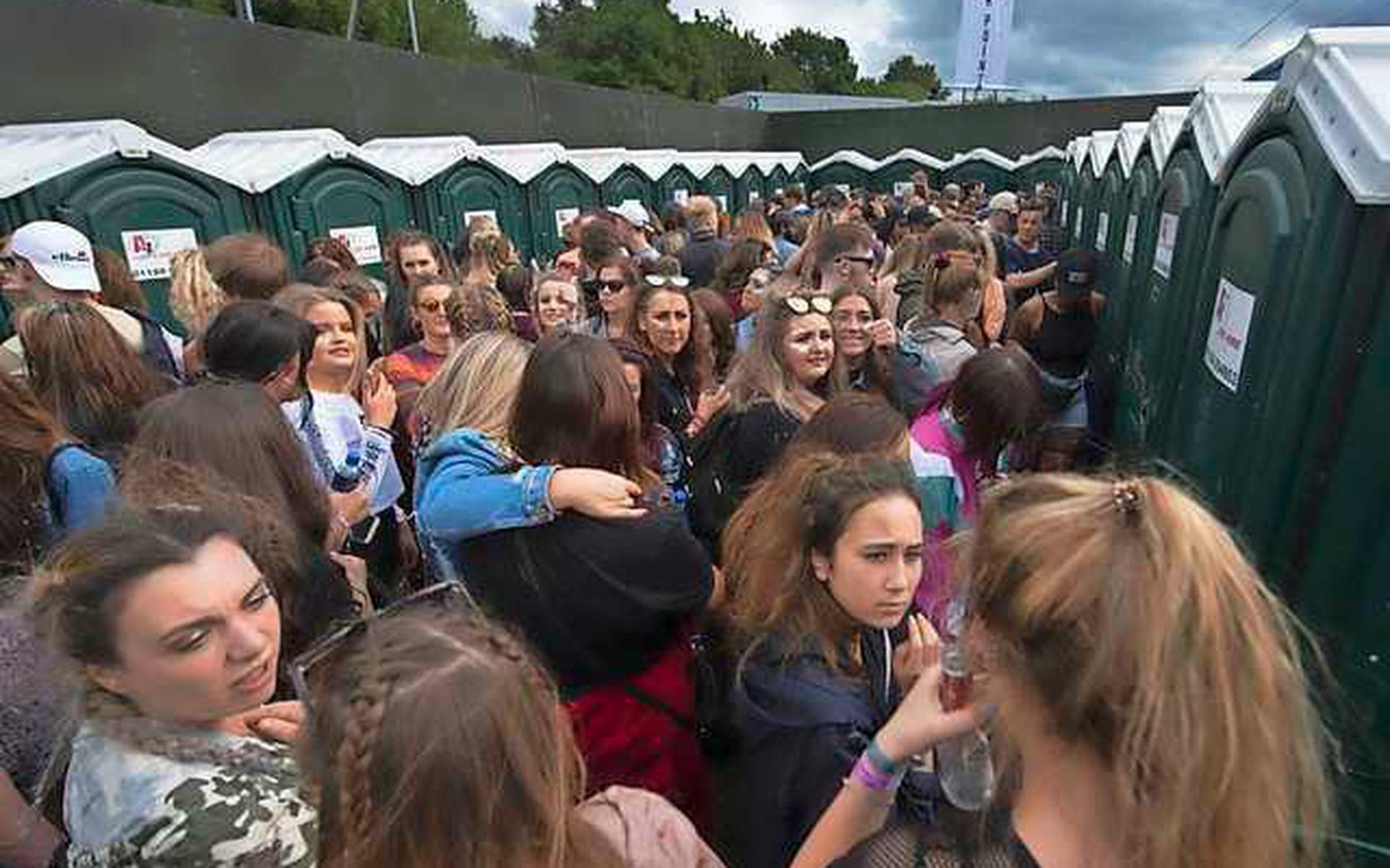With summer just around the corner, festival season will start again soon. And this will be true for many people: when you think of festivals, you think of endless queues in front of women’s toilets. Belgian scientist Wouter Rogest, professor of queuing theory at Ghent University, believes he has found the solution to this problem.
It seems like a law at festivals. While the men make a quick visit to one of the many urinals, female festival-goers wait in line for minutes until a restroom stall becomes available.
Wouter Rogest, a professor of queuing theory at Ghent University, has been researching queues and how to get rid of them for years. He’s surprised at how normal we find these women waiting. “It’s a blind spot in liberation. Bras were burned in the 1960s, but we’ve forgotten to deal with toilets. We have to give women the facilities they need, because they’ve been waiting now for too long.”
Toilet design with less waiting time
Rogest is not a sociologist but an engineer. Based on the simulations, he and his colleagues calculated the toilet design that resulted in the least wait time. He sees queues as “complex, non-linear systems.” “This means that a small change in capacity can cause a disproportionately large variation in waiting time. If you install 25 percent more toilets, the waiting time will improve dramatically. But at the same time, one defective cubicle can lead to a traffic jam.” The same applies to crowds: a 10 percent increase in the number of visitors to the toilets can lengthen the queue by half.
Why do women wait in line longer? Because they need more time on the toilet, this seems like the logical explanation. “We assumed so,” Rogest says. “But we’ve come back from that since then. In fact, men do come faster when they use a urinal, but there haven’t been any many studies on men visiting a bathroom stall. Why would they be faster? Especially now that we’re quickly checking our smartphone in the toilet.” “So we have thrown this difference between men and women overboard.”
Advantage for men who have to go to the toilet
According to the professor, the longer or shorter toilet duration depends primarily on the toilet used. “In our calculations we assume that on average a visit to the urinal takes one minute and to a toilet stall a minute and a half. Does this lead to discrimination between men and women? Sure, because women can only go to slow toilet stalls, while men have a choice between a stall and a urinal.
In some cases – such as the sanitation of a roadside restaurant or an airport – another factor is added. “There is often separate toilet infrastructure for men and women, but this system does not work at all. There is usually equal space for men and women. You can fit more urinals on the same surface area than in cubicles, which is to the advantage of men.” In addition, toilet time is shorter and so unless you get the men’s cubicles are not occupied and a few meters away the women are standing in line.”
Gender neutral toilets
It is no coincidence that venues with an international audience stubbornly insist on providing separate toilets for men and women. After all, visiting the toilet is largely culturally determined. “For example, Anglo-Saxon countries are not ready for gender-neutral toilets, while in Scandinavia it is not a problem,” Rogest says.
Back to festivals. Toilet cubicles there are generally gender neutral today. In this regard, they achieve better results than public buildings or airports. But there is still room for improvement, according to simulations that Wouter Rogist and his team conducted using different toilet designs.
Predictably, separate toilets of equal space for men and women – think again, at an airport – fare the worst in comparison. It’s not just that the average wait time in the simulation is only 3 minutes and 15 seconds. Moreover, they are very unevenly distributed. Women have to wait in line for an average of 6 minutes and 19 seconds, and men only 11 seconds.
So how can you ensure that the waiting period is equal for men and women? Eliminate urinals and install only gender-neutral cubicles. In this simulation, everyone, without exception, has to wait in line for two minutes and one second. But is this desirable?
The perfect toilet layout
Rogest sees a better option. “The ideal setup is a combination of booths and urinals. If men choose the faster urinals, the booths remain free for women. This reduces waiting time for everyone. Moreover, this option is also more interesting from the festival organizers’ point of view, because urinals are cheaper and easier to clean.” .
Gender-neutral booths and urinals, that’s exactly the mix most festivals offer these days. Things usually go wrong in the relationship between the urinal and the cubicles.
“For an audience that is 50% men and 50% women, the rule of thumb is: at least two stalls per urinal,” says Professor Rogest. “But all festivals do it wrong. We often see that there are more urinals than booths. The Nerdland Science Festival in Wachtebeke, Belgium, came close this year: a ratio of 14 booths for every 9 urinals. But even there the 2-to-1 ratio is not achieved.”
The reason for this is not complicated. “Festivals absolutely do not want to queue at urinals, because they fear that male festival-goers will violently urinate on the stampede barriers, and they want to avoid that at all costs. It seems that women now obediently waiting in front of the booths is acceptable.
The call to festival organizers is clear: at least two gender-neutral booths are needed for each urinal. In the simulation, the average wait time dropped to 1 minute and 12 seconds, a 63 percent reduction in wait time compared to the first setting. For women, the waiting time decreases by approximately 5 minutes, while for men it increases by 47 seconds. “But can men complain about that? No,” Rogest says. “Because even our best lineup is still not equal. Women still have to wait in line longer than men, but the average waiting time has decreased significantly.
Finally: The lead ranges also affect the ideal toilet setting. “You might need more urinals for the Rammstein crowd and more booths for when Taylor Swift comes to perform,” Rogest says. “As an organizer, you can install dynamic signage in sanitary facilities so that you can direct men to the urinal as much as possible, or you can arrange the toilets differently depending on the audience. We are currently investigating this.”









